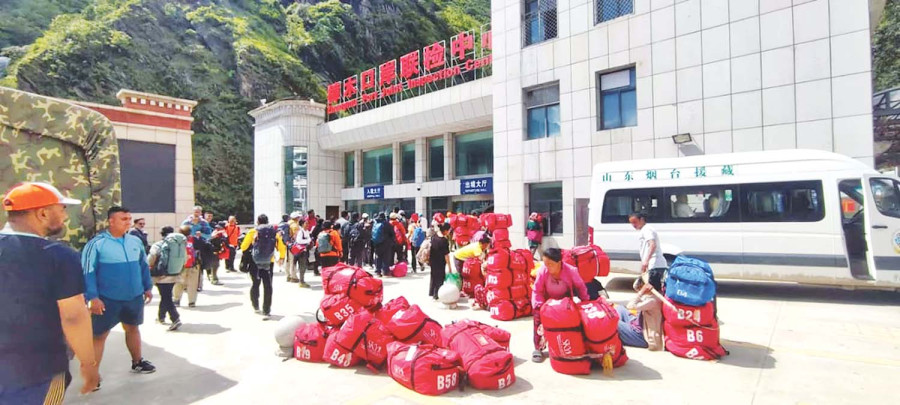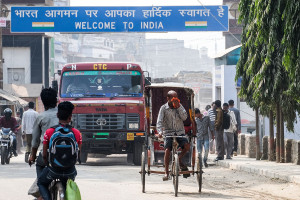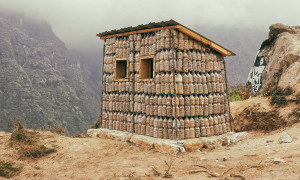Money
Nepal set for pilgrim influx as Kailash yatra resumes
After 5-year halt due to Covid and border tensions, Indian pilgrims are finally allowed to undertake sacred journey.
Sangam Prasain
Nepali tourism entrepreneurs this year expect to cater to at least 25,000 Indian pilgrims embarking on the revered Kailash Manasarovar yatra in Tibet, China. After improved diplomatic ties with New Delhi, Beijing officially resumed the pilgrimage for Indian citizens in June, following a five-year hiatus.
On January 27, 2025, Chinese Vice Foreign Minister Sun Weidong held a China-India Vice Foreign Minister-Foreign Secretary Dialogue with Indian Foreign Secretary Vikram Misri in Beijing. In the meeting, the two sides agreed to resume the Kailash Manasarovar pilgrimage for Indian nationals to Tibet.
The Indian government facilitates the Kailash Manasarovar yatra through two primary routes: the disputed Lipulekh Pass, and the Nathu La Pass in Sikkim.
Both routes operate in coordination with Chinese authorities. The Kumaon Mandal Vikas Nigam manages the Lipulekh route, while the Sikkim Tourism Development Corporation handles the Nathu La option. These are official government-managed routes with pre-arranged quotas.
However, most Indian pilgrims opt to travel privately via Nepal. There are four key routes through Nepal to reach Kailash: Tatopani, Rasuwagadhi, Hilsa, and the Kathmandu-Lhasa flight.
The Rasuwagadhi-Kerung route connecting Nepal and China was cut off on Tuesday due to a flash flood originating in China. The flood washed away the Miteri Bridge, a key structure on the route, and caused extensive damage to infrastructure on both sides of the border.
At least nine people have died and 19 others remain missing.
The Rasuwagadhi-Kerung route, which officially began operations in December 2014, became Nepal’s second major trade point with China after Tatopani.
In 2017, it was upgraded to an international checkpoint, allowing cross-border travel with visas and passports. Since, it has been drawing the Kailash Mansarovar pilgrims as it is the cheapest option among the four routes.
The Kailash Manasarovar yatra is one of the most profitable tour packages for Nepali travel companies.
The annual pilgrimage season brings a boom to the tourism industry and also significantly boosts government tax revenue. Religious travellers fill hotels and restaurants and keep travel agents, airlines, guides, and porters busy throughout the season.
“The yatra has already started. So far, Nepali operators have received confirmed bookings for around 25,000 Indian pilgrims—16,000 of them Indian citizens, and the rest Non-Resident Indians [NRIs],” said Basu Adhikari, managing director of Touch Kailash Travel and Treks.
“But much depends on how smoothly the Chinese embassy in Nepal facilitates the visa process.”
The Kailash Manasarovar yatra season typically runs from June to September.
In June alone, Nepal recorded 32,662 Indian tourists arriving by air, many of whom, insiders say, were on the Kailash pilgrimage. Indian tourists entering Nepal via land routes are not officially counted in tourist arrival statistics, so actual numbers are likely higher.
The Kailash pilgrimage via Nepal is deeply intertwined with India-China relations.
Although China reopened the border for tourists and Nepalis in 2023, it restricted Indian travellers from visiting Kailash Mansarovar due to lingering diplomatic tensions following the 2017 Doklam standoff.
In 2023, after the Covid crisis had receded, nearly 50,000 Indian pilgrims booked the Kailash Manasarovar yatra via Nepal. However, Chinese authorities denied them access, even as they allowed pilgrims from other countries, making Indians the sole exception.
During the G20 summit in Rio de Janeiro, Brazil, in November 2024, India’s External Affairs Minister S Jaishankar and China’s Foreign Minister Wang Yi discussed several confidence-building measures, including reopening the Kailash Manasarovar yatra and resuming direct flights between the two countries.
A month later, a follow-up meeting was held in Beijing between Wang Yi and India’s National Security Advisor Ajit Doval.
In Hinduism, Buddhism, and Jainism, the Kailash pilgrimage is considered one of the most sacred journeys.
Mount Kailash is the mythical abode of Lord Shiva, and devotees believe that completing the kora—the circumambulation of the mountain—can absolve them of all sins.
At Lake Manasarovar, pilgrims once took a sacred dip directly in the lake, though this has been banned since 2018. Pilgrims can still collect water in buckets for ritual use.
According to Nepali travel traders, more than 20,000 Indian pilgrims travelled to Kailash and Manasarovar via Nepal in 2018. In 2019, the number jumped to nearly 30,000. Then came the Covid pandemic, and China shut its borders in January 2020.
With the route reopening after three years, Nepali tour operators said they had been overwhelmed with bookings from Indian pilgrims.
However, operators say the road to Kailash, especially for Indian pilgrims, remains fraught with complications due to Beijing’s many travel restrictions.
Tibetan authorities allow Indian pilgrims to exit via Kodari, Hilsa after Rasuwa bridge collapse
KATHMANDU: After Tuesday morning’s flash flood destroyed the Nepal-China friendship bridge in Rasuwa, Tibetan authorities have allowed Indian pilgrims returning from the Kailash Mansarovar Yatra to exit from two points—Kodari and Hilsa.
According to Indian media reports, a group of Indian pilgrims reached the Kerung border by bus on Tuesday to cross into Nepal, but had to stop as the bridge was no longer there.
Jitendra Shahi, chairperson of Kathmandu-based Mountain Gaze Travels & Treks, told the Post that the Tibetan authority granted permits for emergency exit through the Kodari-Tatopani route, about a five-hour drive from Kerung.
“Twenty-three people in our group returned to Kathmandu from Kodari on Wednesday,” he said.
“The journey took about eight hours via the Kerung-Kodari-Tatopani-Kathmandu route.”
“Usually, the Chinese authorities do not permit exits from alternate points, but given the emergency, they made an exception,” he added. According to him, about 500 people returning from the Kailash yatra were waiting to cross the border.
Tour operators said that approximately 400 pilgrims returned through Kodari on Wednesday and Thursday.
In parallel, around 300 pilgrims travelled to Tatopani to begin their Kailash yatra, while about 500 others flew to Nepalgunj, from where they are scheduled to be airlifted to Simikot. These were pilgrims originally booked to travel via the Kerung route.
The Tatopani-Kodari (Khasa) trade route reopened for cargo movement in May 2023, but passenger movement—especially for foreigners—remained restricted. Located roughly 115 km northeast of Kathmandu, Tatopani sits on the Nepal-China border and has historically been a key gateway.
It marks the start of the legendary caravan route to Lhasa and has served as Nepal’s main overland trade route with China since the completion of the Kathmandu-Kodari highway in 1967.




 10.12°C Kathmandu
10.12°C Kathmandu














